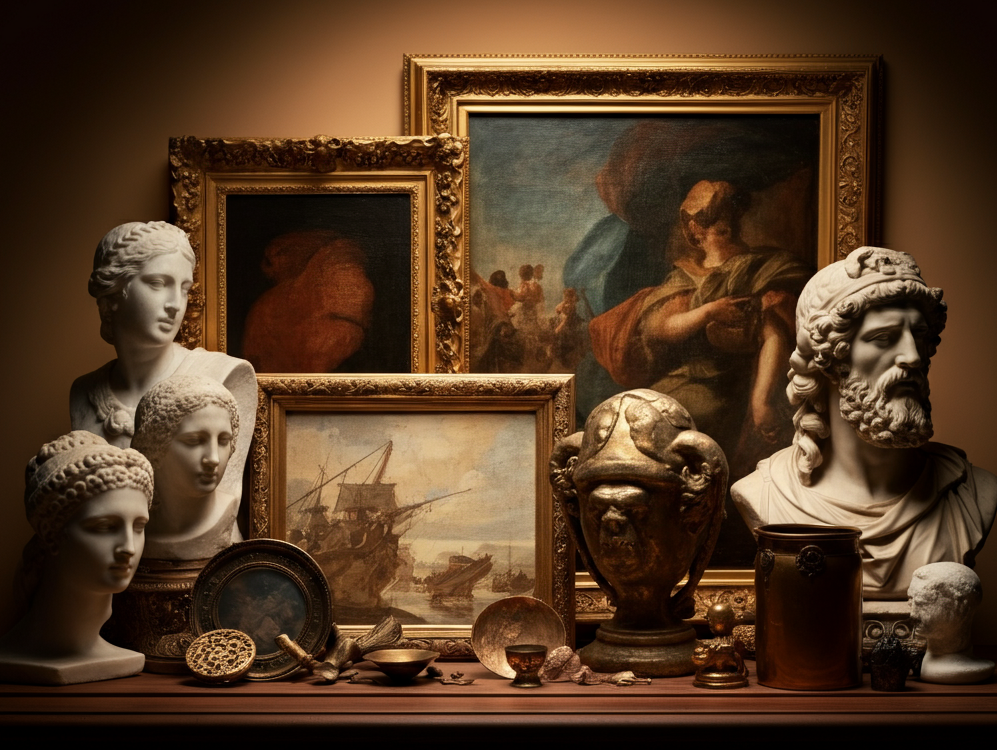Since our earliest beginnings, art has been integral to the story of humanity. The concept of
ancient artz—the creative output of early civilizations—offers us an extraordinary lens into the beliefs, ambitions, and everyday lives of our ancestors. These remarkable artifacts aren’t just echoes of the past; they remain deeply relevant, shaping our understanding of culture, design, and the enduring power of creativity itself.
As an art historian and lifelong admirer of ancient works, I’ve spent years examining how ancient artz continue to inform not just museums and textbooks but the very fabric of our modern experience. Let’s explore their symbolism, technical mastery, and enduring impact—and discover what makes them eternally captivating.
The Profound Purpose and Symbolism of Ancient Artz
For ancient peoples, art wasn’t mere decoration—it was deeply woven into the foundations of ritual, religion, power, and storytelling. To understand ancient artz is to unlock the codes of civilizations lost to time—but whose wisdom still speaks to us.
Sacred and Ceremonial Art: Connecting with the Divine
From the moment humans painted on cave walls, art became a spiritual tool. In Ancient Egypt, tomb murals depicted the soul’s journey beyond death, while Mesopotamian ziggurats rose above the landscape as sacred spaces adorned with symbolic carvings. These works abound with motifs like the
ankh—the cross of life—and the Eye of Horus, universal emblems of protection, eternity, and wisdom.
Symbols of Power: Art as Authority
Monumental creations have always signaled power. Pharaohs immortalized themselves in colossal statues, just as Roman emperors celebrated triumphs in ornate arches. These creations silently affirmed a ruler’s dominance; to stand before them was to feel the weight of empire, the permanence of memory, and the reach of ambition.
Everyday Life: Art as Storyteller
Yet ancient artz also brought the ordinary to life. Greek pottery reveals fragments of daily routine—athletic contests, feasts, rituals. In the Americas, stone carvings recount Mayan creation stories and celestial cycles. Each artifact becomes a silent narrator, connecting us to voices otherwise forgotten.
Decoded Meanings: Visual Symbolism Across Civilizations
For the ancient artist, every detail mattered. Symbolism was universal—and nuanced:
- Red in Egyptian murals signified vitality and chaos.
- Spirals and circles—from Celtic to Mayan art—illustrated eternal cycles and the rhythm of life.
- Animal motifs like lions, eagles, or serpents often embodied divine traits or spiritual guardianship.
Modern researchers and archaeologists dedicate careers to decoding these ancient languages of form, color, and symbolism. Their discoveries help us appreciate ancient artz not as static relics but as living, breathing cultural legacies.
Techniques and Materials: The Genius Behind Ancient Artz
The technical mastery demonstrated by ancient artisans continues to inspire awe. Without the benefit of modern machinery, they achieved works of astounding skill—proof of their unique knowledge and experience in transforming raw materials into lasting beauty.
Mastery of Materials
- Stone: Egyptians used limestone and granite; Greeks mastered marble; Mesoamericans carved volcanic rock. Each culture harnessed local materials to grand effect.
- Clay: From Greek amphorae to China’s Terracotta Army, clay was shaped, fired, and painted, yielding everything from utilitarian pots to monuments of global recognition.
- Metals: Bronze, gold, and silver adorned jewelry, forged statues, and served as ritual objects. West Africa’s Benin Bronzes stand among history’s finest achievements in metalwork.
- Pigments: Minerals, plants, and even insects became brilliant dyes. Lapis lazuli, the source of ultramarine, lent Egyptian art its striking blue—a color once more valuable than gold.
Innovative Artistic Processes
- Lost-Wax Casting: Enabled the creation of intricate, durable metal sculptures—examples still admired in museums worldwide.
- Fresco Painting: Water-based pigments applied to plaster walls, leaving stories preserved in vibrant color for millennia.
- Relief Carving: From Assyria to Egypt, raised images on stone walls were narrative tools as much as artistic feats.
Each method reflects generations of experimentation, trial and error, and mastery passed down through families of craftspeople—showcasing the vast experience and authority these cultures wielded in the world of ancient artz.
Timeless Masterpieces: Iconic Ancient Artz Across Cultures
History’s greatest cultures left us artistic treasures that still command wonder and respect. Here are just a few exemplars, representing the diversity and ingenuity of ancient artz.
Egyptian Art
- Pyramids of Giza: Iconic feats of engineering serving as royal tombs, still shrouded in mystery and mathematical precision.
- Bust of Nefertiti: This stunning portrait showcases the delicate artistry and realism achieved by Amarna-era sculptors.
- Tomb Paintings and the Book of the Dead: Vivid, symbolic, and layered with meaning, these guided Egyptians through the afterlife.
Mesopotamian Art
- Ziggurat of Ur: A sacred step pyramid commemorating both religious devotion and architectural innovation.
- Cylinder Seals: Miniature, intricate, and singular—personal “signatures” used to legitimize transactions, now invaluable to archaeological research.
Greek Art
- Discobolus (Discus Thrower): A sculpture epitomizing the Greek pursuit of ideal proportion and movement.
- Parthenon: Athens’ crowning glory, blending mathematics, myth, and artistry in breathtaking harmony.
Roman Art
- Pompeii Frescoes: These preserved wall paintings provide unique insights into Roman daily life, mythology, and interior décor.
- Colosseum: A marvel of ancient engineering; a space for spectacle, performance, and social order on a massive scale.
Asian Art
- Terracotta Army: Over 8,000 life-sized warriors, each with unique features, standing guard for China’s first emperor—a staggering testament to artistic organization and skill.
- Ajanta Cave Murals (India): Masterfully painted Buddhist stories, still vibrant after more than a millennium.
Pre-Columbian Art
- Mayan Stelae: Stone monuments recording historical events and cosmic cycles in intricate relief.
- Nazca Lines (Peru): Enormous geoglyphs etched into the earth, visible from above and shrouded in speculation.
Each work illustrates the priorities, beliefs, and technical achievements of its creators. Studying these examples reveals both the diversity and the unexpected commonalities threaded through ancient artz worldwide.
The Enduring Influence of Ancient Artz on Modern Life
Even thousands of years later, the echoes of ancient artz shape our everyday environment. From city skylines inspired by Roman arches to jewelry lines that reference Egyptian motifs, the legacy of ancient creativity is everywhere.
- Architecture: Government buildings, museums, and even suburban homes reflect the proportions and motifs of Greek and Roman temples.
- Fashion & Design: Designers frequently borrow patterns, color palettes, and symbolism from ancient textiles and ornamentation.
- Popular Culture: Movies, television, and games retell tales of ancient gods and legends, ensuring that these stories remain alive for new generations.
But the influence runs deeper. Ancient artz has taught us about resilience, ambition, and the search for meaning—universal themes that continue to resonate and inspire in a modern context.
FAQs About Ancient Artz
What is ancient artz?
Ancient artz refers to the creative works and practices of early human civilizations—sculptures, architecture, paintings, pottery, and more—each often loaded with religious, symbolic, or practical purpose.
Why does ancient artz matter today?
Studying ancient artz connects us to humanity’s fundamentals—ingenuity, belief, community, and creativity. It offers insights that still shape today’s art, culture, and identity.
What materials did artists use in ancient artz?
Stone, clay, bronze, gold, natural pigments, and textiles were commonly used, reflecting both the resources available and the ingenuity of ancient craftspeople.
Which ancient artworks are the most famous?
World-renowned examples include the Pyramids of Giza, the Chinese Terracotta Army, Greek sculptures like the Discobolus, and the mysterious Nazca Lines in Peru.
How does ancient artz shape our world now?
The motifs, methods, and meanings embedded in ancient artz continue to inspire everything from architecture to storytelling, influencing the way we design, build, and imagine the world today.
Conclusion: The Living Legacy of Ancient Artz
Ancient artz is not just a collection of museum pieces—it’s the living heartbeat of our collective memory. Its echoes shape our cities, fuel artists’ imaginations, and remind us that the quest to create, communicate, and connect is as old as humanity itself. By recognizing and celebrating these works, we not only honor the extraordinary ingenuity of our ancestors but also ensure that their vision survives for generations to come.
If ancient artz has inspired you as much as it has me, consider diving deeper: visit a museum, read more about a culture that fascinates you, or even try your hand at recreating an ancient technique. The past is always closer than we think—and its lessons are waiting to be rediscovered.



